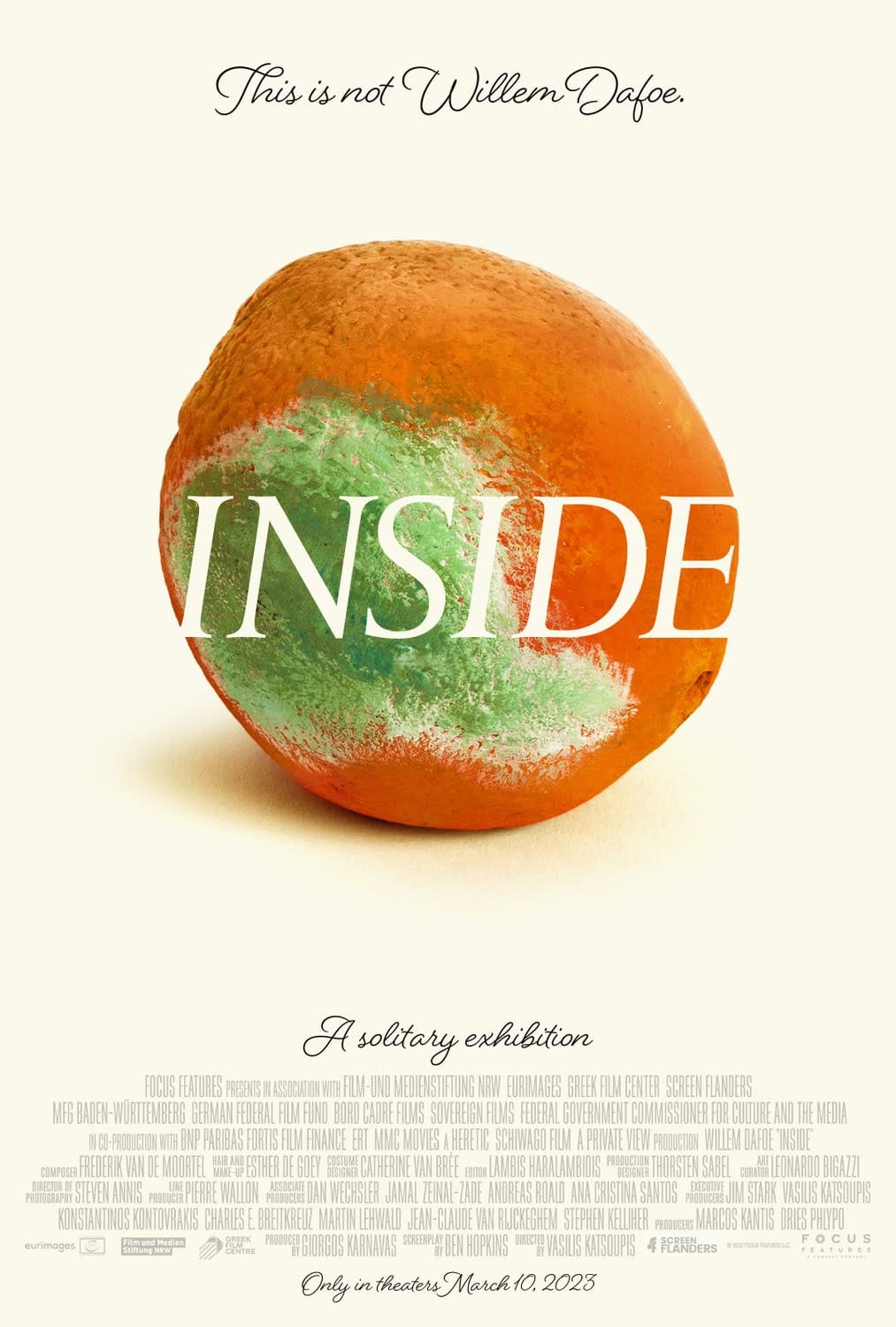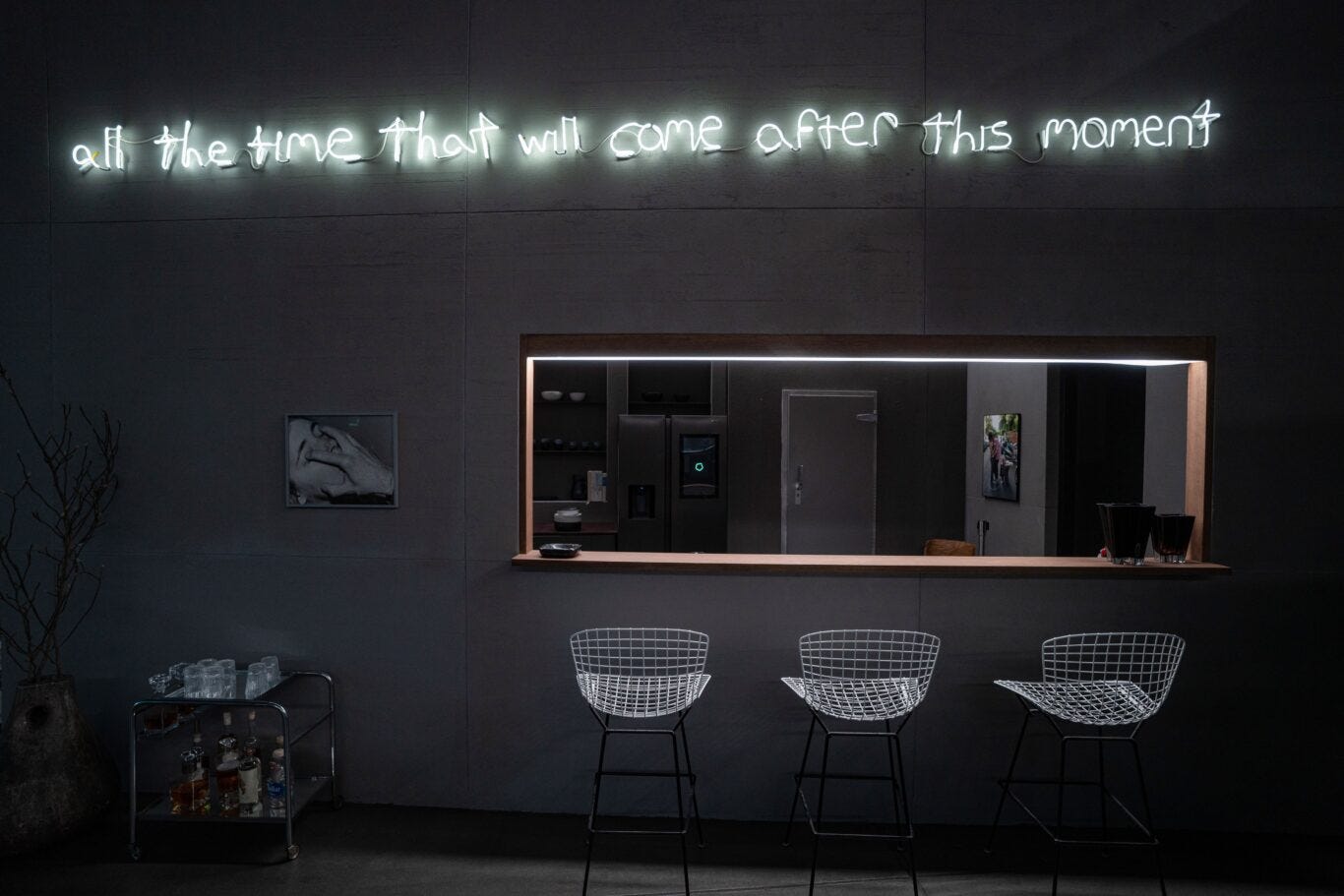Inside
Is there something to unpack? Or is it just opaque?

I was fortunate enough to catch a showing of Inside last night, on the eve of it going wide in the US. I’d been looking forward to this one. Willem Dafoe is such an interesting actor and one I’ve been watching in earnest for quite some time. From big budget fare like the original Spider-Man trilogy and John Wick, to bizarre supporting roles like American Psycho and The Life Aquatic, to intense films like Anti-Christ and The Lighthouse. He’s my most watched actor, just edging out Samuel L Jackson. So I was delighted that he was being the stage to himself, to show off his talents and range and strange sensibilities.
I wasn’t quite sure what to expect from the film based on the trailer. Clearly, it was never “just” going to be about Dafoe’s ordeal. Sure, that could’ve made for an interesting acting and character study: think of something like 2013’s Locke. But the trailer ends with a short monologue about his reverence for art, by which he means visual art (more on that in a bit). So clearly art and its power and importance is going to be central to this film.
Twenty-four hours later, I’m still stewing on this, unsure what I thought of what I watched.
As such, this is going to be a different review. It’s going to be more stream of consciousness as I try to work through the movie to understand it. Because it left an impression on me despite a lack of comprehension, so there’s definitely something there, no matter what I conclude about whether it worked. You get to see how I think about these things, for better or for worse. Will it make sense? Who knows!
In any case, there’s gonna be spoilers. Be warned!
Let’s start with the monologue from the trailer. It bookends the film (albeit with an extra bit at the end), emphasizing its importance. But why? It puts forth his disregard for human beings when art is on the line, which can explain how he got involved in this heist. It demonstrates that he doesn’t consider music to be art, which is interesting; he’s only into visual mediums, largely drawing/painting. But he has no chance to favor art over life, given his situation; just his survival over life. Is the point the final line, where he says “art is for keeps”? That would also explain his thieving, since it would imply once he’s in possession of art, it’s his. But it would also be kind of hollow…
Alright, let’s look at his behavior once he’s locked in. The first thing he does (more or less) is try to dig through the ornate front door. That is, his initial act is one of destruction of art, somewhat indicating his hypocrisy, since clearly he values his own survival over art. In fact, it’s just his first act of destruction. The whole thing is a slow moving desecration of this space, much of it in service of survival. He tears the place apart, building his makeshift mountain at the center of the room to reach the ceiling.
Which is definitely an early nod to his closing statement, that destruction is an act of creation. The monument/sculpture that will mark his method of escape; the shrine he builds against the wall from dismantled parts; even the makeshift art supplies he uses to draw on the wall. Little in the apartment is spared; all experiences a second life in some other role.
Throughout the tale, he mostly keeps his wits. He starts to fray a bit, falling in love with the cleaning lady on the security camera and treating his routine as a talk show. Near the end, he starts to hallucinate and become more desperate, which eventually pushes him to start to create. It’s then that the wall’s potential as a canvas reveals itself, which spirals out (figuratively and literally) into the aforementioned shrine. Circles and spirals are his focus, as if to drive home what his life has become.

Alright, the thematic stuff isn’t quite unwinding for me, so let’s turn to the events.
The inciting incident is particularly odd. The security system malfunctions, trapping him in the apartment. It’s blaring noise seems to be an alarm going off, but fine. Then we have the temperature fluctuation, which come off like a total plot contrivance (albeit one that doesn’t matter). After a delay, the heat just turns on. Then increases super slowly, at seemingly random intervals and over random amounts of time. And eventually, it randomly flips to A/C, following the same pattern. Before turning back to heat, and staying there, but seemingly not getting super hot? This system can drive crazy extremes that no HVAC supports. But odder is just that it’s happening at all. I kept expecting some reveal that the owner was messing with him. Instead, I think we’re just to understand it to be random because the panel is busted?
His partner abandoning him the moment the panel malfunctions, and never checking back in, is quite odd. It made me think maybe he was in on it. Yeah, we see some heavy electronic interference on the TV. Putting aside that makes no sense, it didn’t impact the walkie talkie at first, so why would it later?
What about the all important self-portrait, the painting he couldn’t find during the heist? Well, he eventually finds it in a hidden passageway with a rubber dummy and a book on the supernatural. What does it mean? Unclear. Why did they want to steal it? Dunno. What does he do with it? Nothing.
The passage contains a book which becomes important though, as he’s reading from it and repeating mantras, especially around the idea of energy and the soul, heaven and hell. I think it’s one of the things he saves at the end, although we’ll never really know for sure.
I do wonder about that. It’s said as if we should know what he took. There were 4 paintings, so it’s not just “the paintings”. And we only get a couple wides of the room as he climbs up through the skylight, so we can’t see anything. I mean, that’s probably not the point, right? If you can discern the answer, it must relate to the themes. Could it be something about the experience? Maybe, but it’s stated as if he’s rescuing three physical objects.
Alright, I have one final thought. While writing this, it occurred to me that in many, many ways he’s an animal in captivity. There’s the obvious cage, sure. But he’s robbed of many creature comforts, from cooked food to sanitation. He’s slowly reduced to survival mode. No, he never goes feral, maybe tethered by his connection to the outside world by the security footage. But he’s constantly looking for escape, dreaming of a mate, and protecting himself from the elements any way he can. It’s kind of thin, but it’s something.
Well, that was an interesting exercise. I’ve no idea what it’s like to read, but there it is. A thousand words on Inside, stream of consciousness. Did I get any closer to understanding the film?…meh. I don’t think so.
It’s very opaque, trying to subsist on its vibe and the presence of Dafoe. It’s artfully made, which draws you in and makes you want to understand it, but then pushes you away at every turn. Ultimately, all I can conclude is that its final thought is its thesis, of destruction as creation. Which makes it both incredibly straightforward (it tells you its idea!), and absurdly frustrating. And not in the way where I’ll turn it over in my mind for days. Rather, in the way I’ll be glad when it’s gone, despite being grateful for the experience.